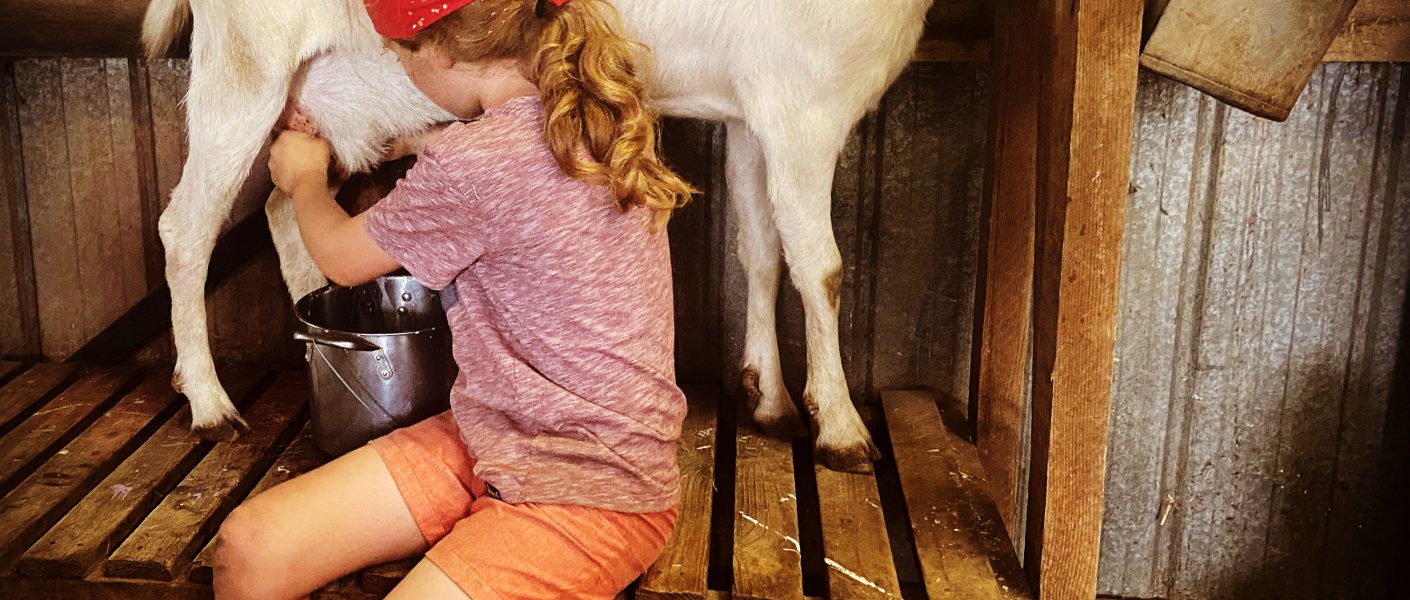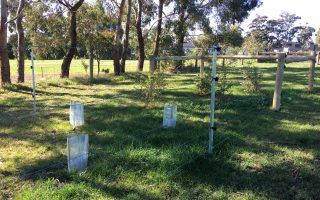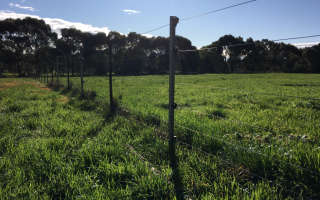If like me you have kids, it can be important to get them actively and positively involved in your farm. Depending on the age of the child in question, there are different things you can do that will not only make them feel like they are helping, but also give them a sense of responsibility and maybe also have some fun!

Older children can be given the choice of some of the activities that they might like to be involved with – they are much more likely to want to get involved if it is something they actually have an interest in! Things like milking a special pet goat, feeding out hay to cattle by hand, learning fencing techniques, and using specialised equipment will all be much easier for teens and older children than for smaller younger children. I would never allow any of my children in with an entire male animal (such as a bull, ram or buck) unless they have very close supervision.

Vegetable gardens are great for kids of all ages. Smaller people can poke holes in the ground for seeds such as peas and beans to go into, and it makes it a bit more special for them if they can have their very own watering can that they have chosen themselves at the store. Older kids can help to turn the soil and mix through manure and compost, and can be trusted to put seedlings into the ground without damaging the roots or shoots. Kids of all ages love having their own ‘stuff’ that is for a specific purpose – so their own little wheelbarrows, gardening gloves, gardening tools like little spades and rakes – and makes it more achievable for them rather than trying to wield full-sized equipment. Growing your own vegetables is also a great way to encourage kids to try new foods.

Whilst building a bonfire pile might not be the most riveting of farm jobs, once it is burning most kids have a fascination with just watching the flames. Obviously very small children would need to be watched very carefully around a lit bonfire, and also those that are inclined to play with sticks (I have two of those – stick sword fights!) but generally older children are very good about being careful with loading the actual heap, as well as steering clear of flames and sparks once the fire has been lit. A little incentive that always works with my kids is the promise of toasting marshmallows later, once it has burnt down. Choosing the right toasting stick beforehand is always very important (or so I am told), and the novelty of sitting up after dark around the fire never seems to wear off.
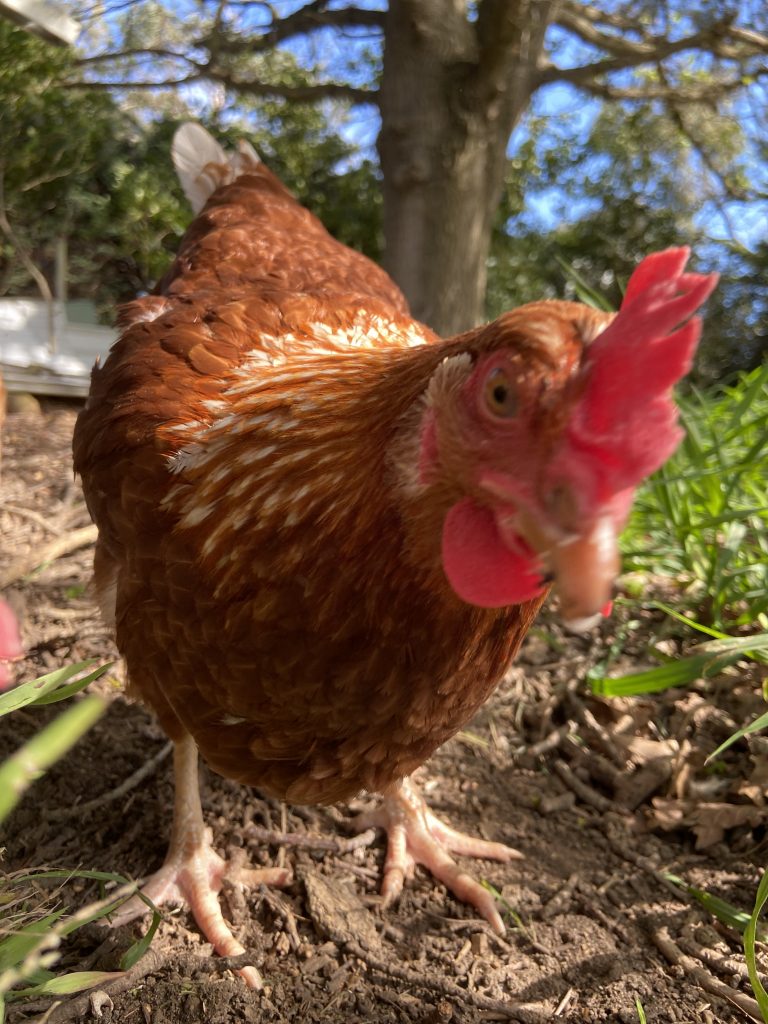
Feeding and looking after poultry is also great for kids of all ages, providing you don’t have an aggressive rooster of course! When I was very small, one of the things I used to really enjoy about visiting my grandpa’s farm was feeding out handfuls of wheat to the chooks in the evening, and collecting the eggs. I even earned ‘wages’ from doing this all important job, which was incredibly satisfying at the time. Just remember that if you have roosters, they can become quite territorial and even aggressive and children may find this intimidating or even frightening.
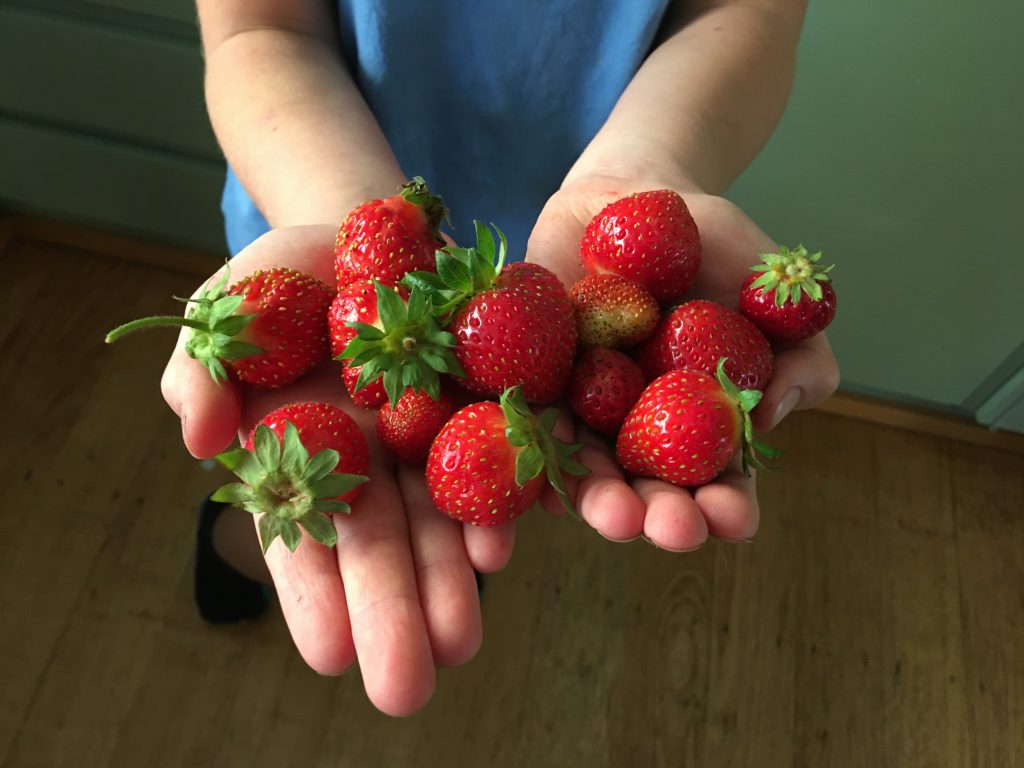
Harvesting fruit (although seasonal) is another little activity that kids often love to get involved with. Holding buckets and counting out the fruits as they are added, selecting the fruits that are going to be picked, and discussing what to do with them are all activities that are easy for even the smallest of children. Older kids might like to climb the ladders and even cook the fruit up themselves if they have the appropriate kitchen skills. Again, this can be a good way to encourage children to try new foods.
There are so many ways that kids can get involved in farming – this post would be too long to bother reading if I tried to include them all! Talk to your kids about their interests and what they might like to spend their time on, and try to incorporate some of these ideas into your weekly farming chores. Remember that every child is different, so this is just a guide.
Happy farming!
Cheers,
Chris

